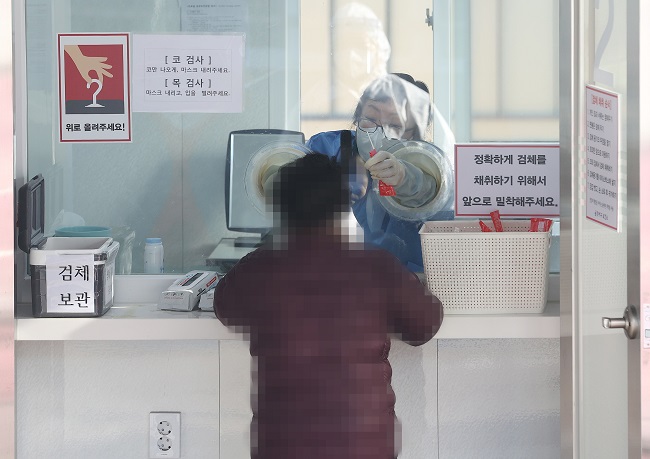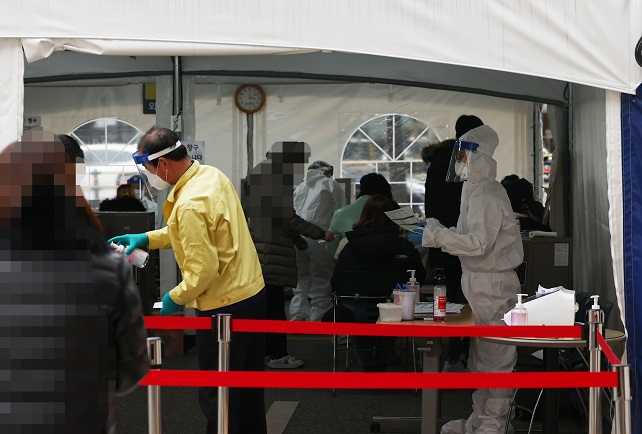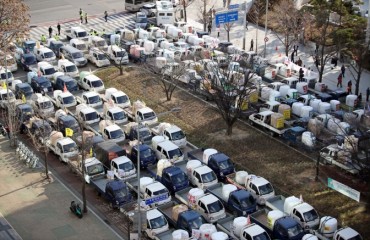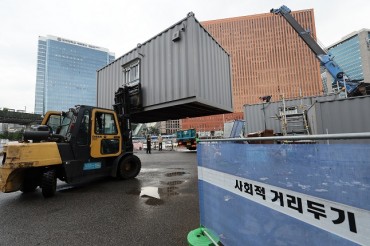SEOUL, Dec. 12 (Korea Bizwire) — The daily number of new coronavirus cases in South Korea crossed the 900-mark on Saturday, reaching a record high nearly 11 months after the country reported its first virus case.
The country added 950 more COVID-19 cases, including 928 local infections, raising the total caseload to 41,736, according to the Korea Disease Control and Prevention Agency (KDCA).
Saturday’s daily caseload marks a sharp jump from 689 the previous day and is the highest mark since January, when the country reported its first confirmed COVID-19 case. The previous record was 909 tallied on Feb. 29.
Cluster infections from private gatherings coupled with massive infections at a church and a hospital in the metropolitan area pushed up the tally, officials said.
In the western district of Gangseo in Seoul, 59 people were confirmed to have contracted the virus in relation to a church, and in Bucheon, west of the capital, 67 cases were reported from a care hospital.
Cases in the greater Seoul area — home to half of the country’s 51 million population — accounted for over 70 percent of the total infections.
Among the locally transmitted cases, Seoul added 359 infections, with Gyeonggi Province surrounding the capital reporting 268. It was the highest daily figure for both Seoul and Gyeonggi Province. Incheon, west of Seoul, had 42 more.
“It is the largest crisis since the first outbreak of COVID-19, and now is an urgent situation,” Prime Minister Chung Sye-kyun said, convening an emergency meeting.
Securing hospital beds is the number one priority at the moment, Chung said, vowing to make sure no patients are pushed to wait without receiving treatment.
Health authorities said the current level of infections is feared to continue for a while, urging citizens to stay home and cancel all face-to-face gatherings.
“With the upsurge in the number of patients in the metropolitan region, the burden on medical resources, including workers, is at an extreme level,” Lim Sook-young, a senior health official, said during a regular press briefing.
Authorities said the current Level 2.5 social distancing measures, the second-strongest curbs under the country’s five-tier virus restrictions, appear to have had a limited impact on slowing the virus so far.
“Despite the heightened social distancing, the volume of movement has not been reduced enough,” Lim said.
The prime minister said the government will have no choice but to raise the antivirus rules to the highest level if the spread of the coronavirus is not curbed at this point.

A citizen undergoes a coronavirus test in western Seoul on Dec. 12, 2020, as South Korea’s daily number of new virus cases hit a record high of 950 nearly 11 months after the country reported its first virus case in January. (Yonhap)
A new record total could be set, as South Korea reported 903 new cases between 12 a.m. and 10 p.m. on Saturday.
The country announces its final daily tally at 9:30 a.m. the following morning. As of 6 p.m. Saturday, South Korea had 549 cases, the highest total at the 6 p.m. point of any day this week.
Because there are typically fewer tests done on weekends, the general expectation was that the final figure wouldn’t reach 900.
But in the next four hours, the country saw 354 additional cases.
Of 903, 710 came from greater Seoul.
Health experts have been warning that South Korea could experience a bigger wave of infections in the winter as respiratory viruses usually proliferate when the weather is cold and dry, while people’s immune systems generally weaken.
It took more than 80 days for the country to see its virus caseload increase from 20,000 to 30,000. However, it only took 20 days for the country to add another 10,000 cases after its tally surpassed 30,000 on Nov. 20.
Provinces outside the metropolitan area also saw an increase in new infections from various events and places.
The southeastern city of Busan reported 58 cases, followed by Gangwon Province with 36 and Daegu and Ulsan with 35 and 23, respectively.
The country added 22 imported cases, including seven from the United States and three from Russia. The figure is up from 16 the previous day.
The number of seriously or critically ill COVID-19 patients came to 179.
KDCA reported six additional deaths, raising the total to 578.
The number of people released from quarantine after making full recoveries came to 336, bringing the total to 31,493.
(Yonhap)







